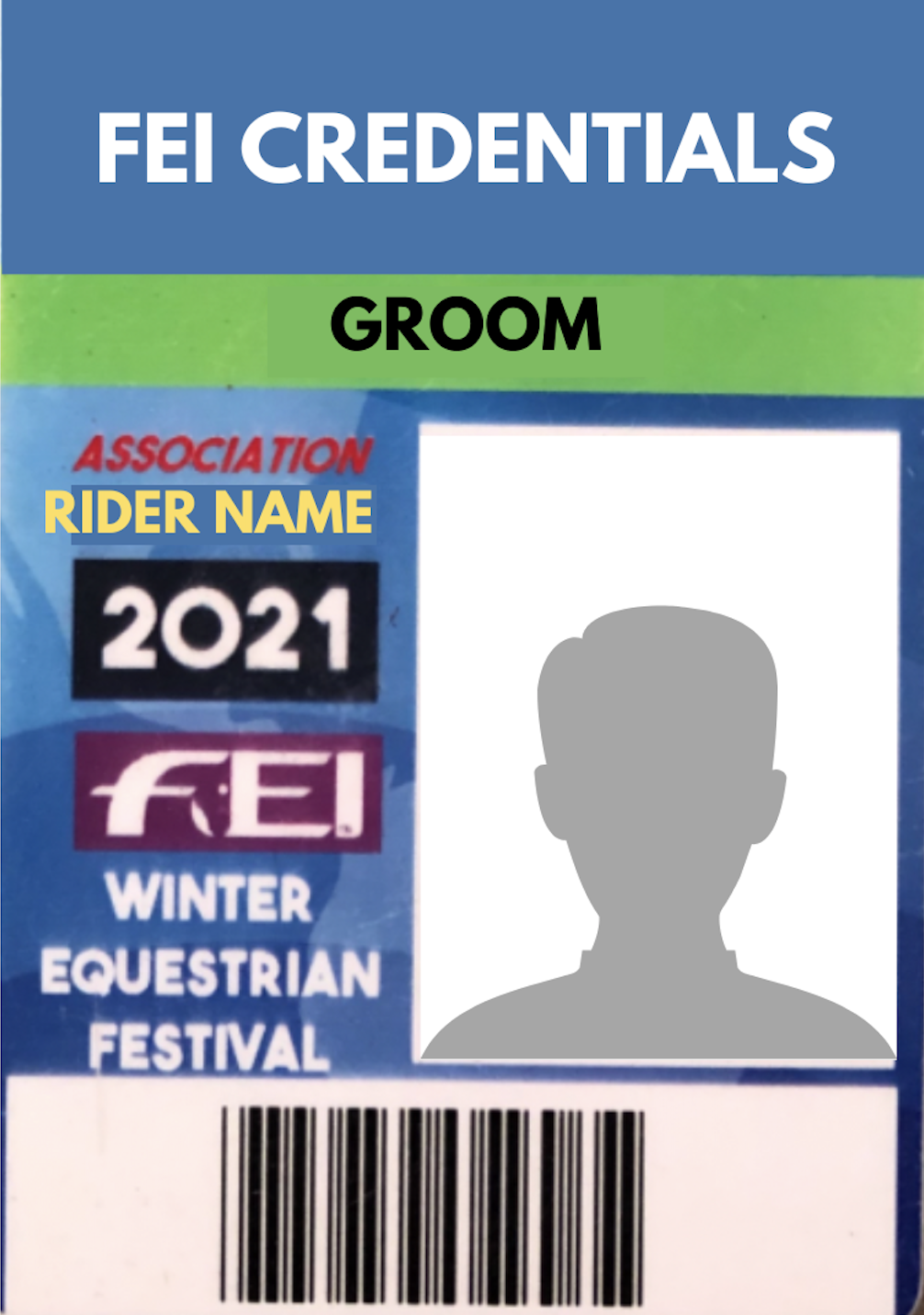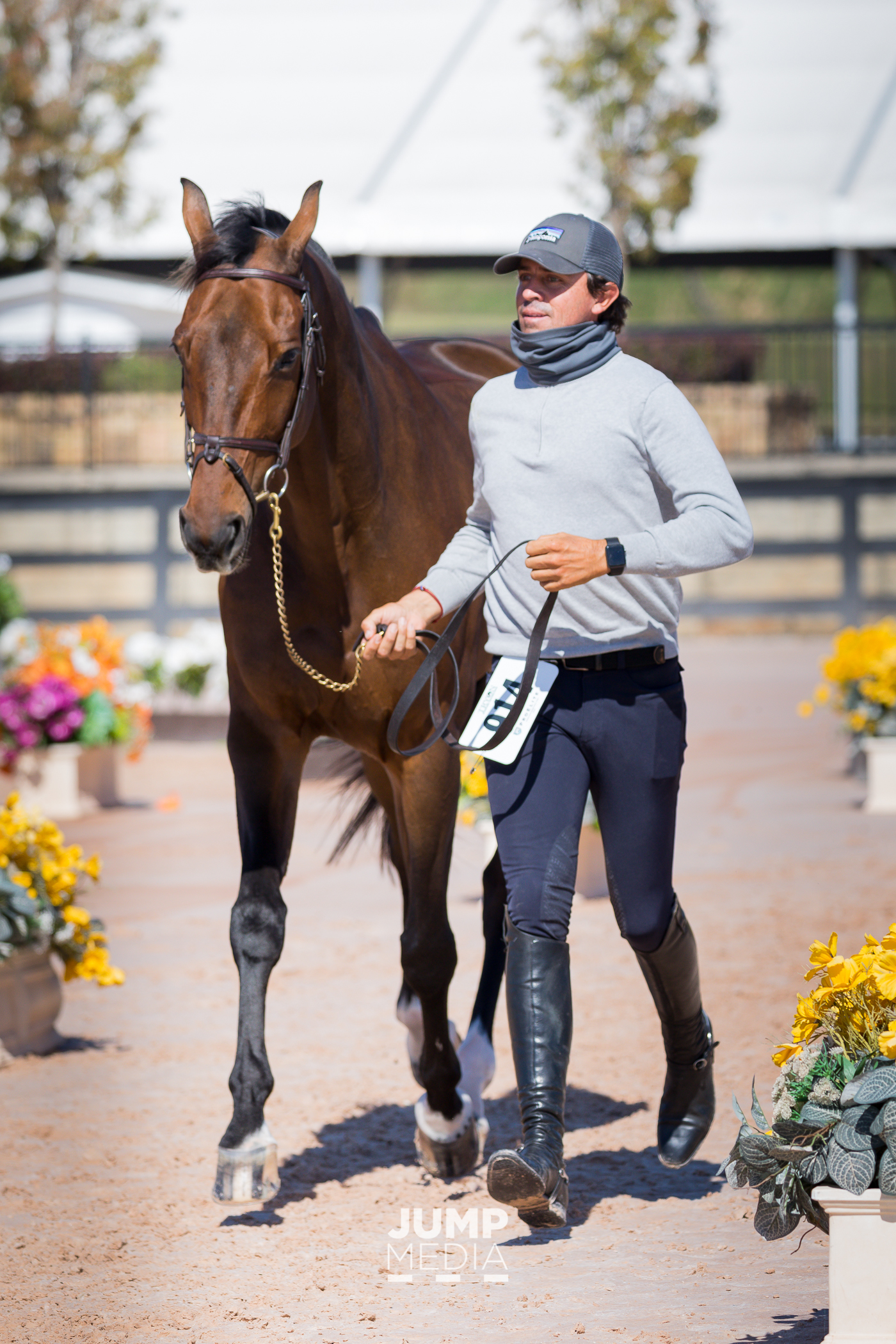
Getting Paperwork Organized for an FEI Competition: The Check-In and Jog
Even after preparing the horse’s passport and completing all of the registrations and entry paperwork, there are still some steps before being accepted at a Fédération Equestre Internationale (FEI) competition. Staying aware of everything you need and the timing of the FEI schedule at the show can help you make the best plan for your team and the horse. Read the first part of our FEI Paperwork blog HERE, and find the second piece HERE.
Before Arriving at the Show:
All FEI competing horses must be stabled in the designated FEI stabling compound. New in 2022, the FEI is now requiring a digitally signed waiver attesting to the horse’s health, as well as body temperature recordings of the horse in the morning and afternoon for three days prior to entering FEI stabling. This information needs to be recorded in the FEI Horse Manager mobile app. It should be completed by the staff taking care of the horse in FEI stabling throughout the competition. Temperature also needs to be taken in this manner for every day the horse is in FEI stabling.

Another important thing to check before getting to the show is FEI stabling credential passes. Only people with FEI stabling credentials are permitted to enter the FEI stabling area at any time. Some competitions give out credential wristbands at the veterinary inspection jog. At other shows, those with connections to the competing horse who wish to enter the FEI area, such as owners, riders, and trainers, need to apply for a stabling credential prior to arriving at the show and then pick up their pass – usually from the FEI office. There is a limit to how many people can have credentials per horse, and the number varies per show. It is a good idea to check how many credentials you may be given ahead of time if that might be a concern for your team. Look for announcements from the show’s organizers about when you should receive your credentials, how many are being distributed per horse, and if there are additional forms to complete.
Checking In to the Stabling Area:
All competing horses must arrive at the FEI stabling compound and complete the initial check-in process during the allotted time listed in the official FEI schedule. You will need your horse’s competition back number, so be sure to stop by the show office to pick it up. Plan your arrival to the show so you can promptly unload your trailer and have enough time to check-in.
The vets at the check-in verify the horse’s identity by scanning the microchip. They cross-reference that with the passport and back number. They also confirm the temperature logs and the horse’s temperature upon arrival to FEI stabling. Ensure that you come prepared with the horse’s passport, number, and enough help such that someone can hold the horse and someone else can take the temperature to present to the show vet.
Remember that once the horse has been admitted to the FEI stabling compound, it cannot leave the show grounds until it has finished competing for the week. Any time a horse temporarily leaves FEI stabling for exercise, hand walking, bathing, or competition, the person at the FEI stabling entrance gate needs to be able to see the horse’s back number to record when the horse leaves and re-enters the FEI stabling area.
Horses outside of the FEI stabling area need to be monitored by the FEI stewards. You must use the FEI-designated areas for riding, grazing, bathing, and competition. If the horse is temporarily leaving FEI stabling, it is essential that either the horse or horse-handler has the horse’s back number attached to them in some capacity. Many grooms choose to have a secondary number that they keep on them at all times when working in FEI stabling.
The Veterinary Inspection Jog:
The jog, also known as the veterinary inspection, happens at an indicated time after the check-in window. There might be separate jog times for different levels of competition if they are happening concurrently, or the jogs might happen simultaneously. Be sure to make note of the time of the jog and have a plan for your horse’s schedule. Some people like to have their horses ridden before the inspection so they are looser and more relaxed. If that is the case, you need to allow enough time to have the horse properly cooled off and groomed. Though it is not an official rule, it is generally expected that horses arrive at the jog nicely turned out. Remember that the jog is a veterinary inspection. This means that your horse should not have any tack or equipment besides the bridle. If it is raining, you could cover your horse with a rain sheet while you wait in line, but you’ll be asked to remove it for the actual jog.

At the veterinary inspection, the passport is checked thoroughly. You also have to jog the horse down and back for soundness on the designated strip. For this, you need the horse, passport, and number. If all goes well and the horse passes inspection, the stewards will keep the passport until the horse leaves FEI stabling at the conclusion of its competition week.
Make sure you factor enough time for the jog into your plans for the day. It can be challenging to avoid waiting in line since every horse needs to be seen at the inspection. Arriving a little early can sometimes help mitigate waiting for an extended period of time.
If you have a stallion, confer with a steward about where to wait for your turn to jog. In order to keep all the horses and people safe, stewards will usually keep stallions separated from the general lineup. They will slot them into the inspection when they can. If you have a particularly challenging horse to handle, it is always a good idea to speak with the steward ahead of time, so you can be as cautious as possible.
Don’t forget that you will need to jog your horse in a snaffle bit or double bridle. You will need to do this even if it is not something they use ordinarily. You can jog with the reins of the bridle, a lead line, or a lunge line. It is best to think about how your horse might react to the atmosphere at the jog and plan accordingly.
Making lists of what you need for each phase of the check-in and jog process can help you stay organized. Having reminders on your phone for different timings can also be helpful. While it can seem daunting at first, the great thing about participating in FEI competitions is that you are among the best athletes, stewards, veterinarians, grooms, etc. It is a great opportunity to learn, and the added intensity will make your successes feel even sweeter. Enjoy the experience, and don’t forget to retrieve your horse’s passport once you are done competing before you head home!
Have questions about utilizing BarnManager or want to give it a try for yourself? Request a live demo here!